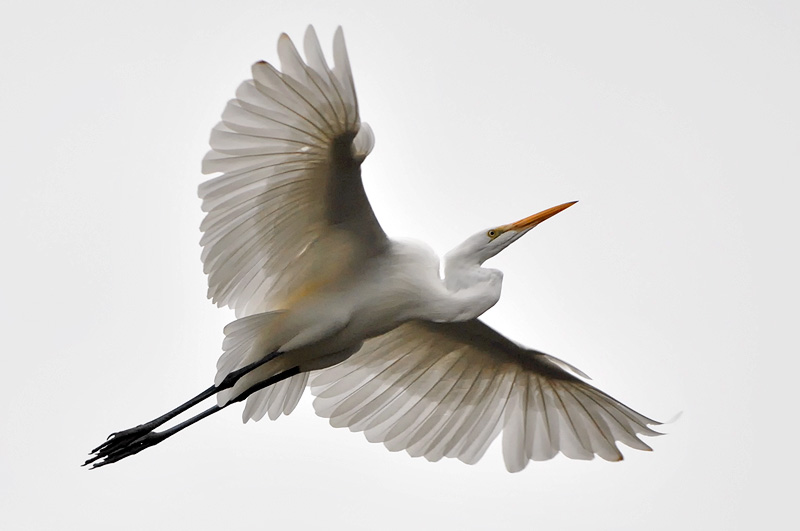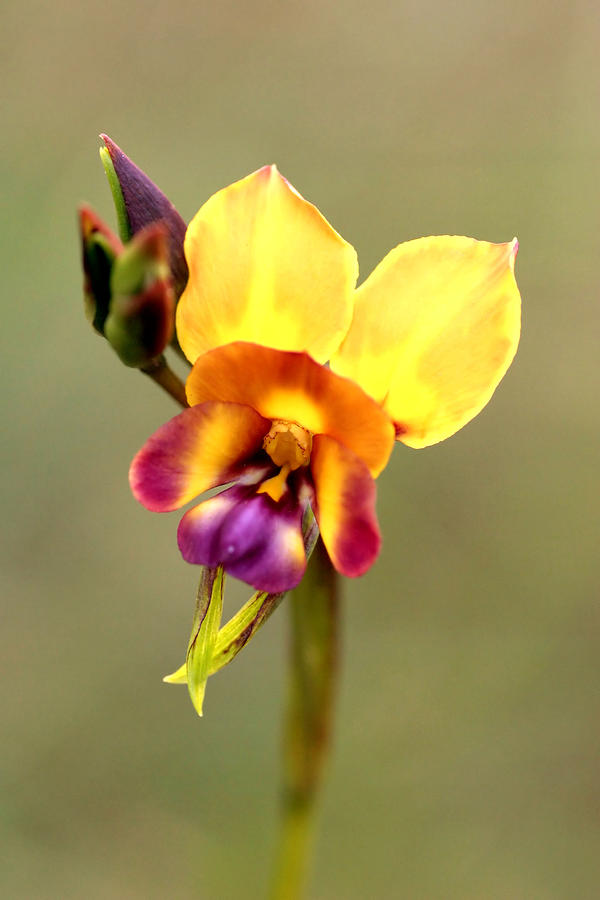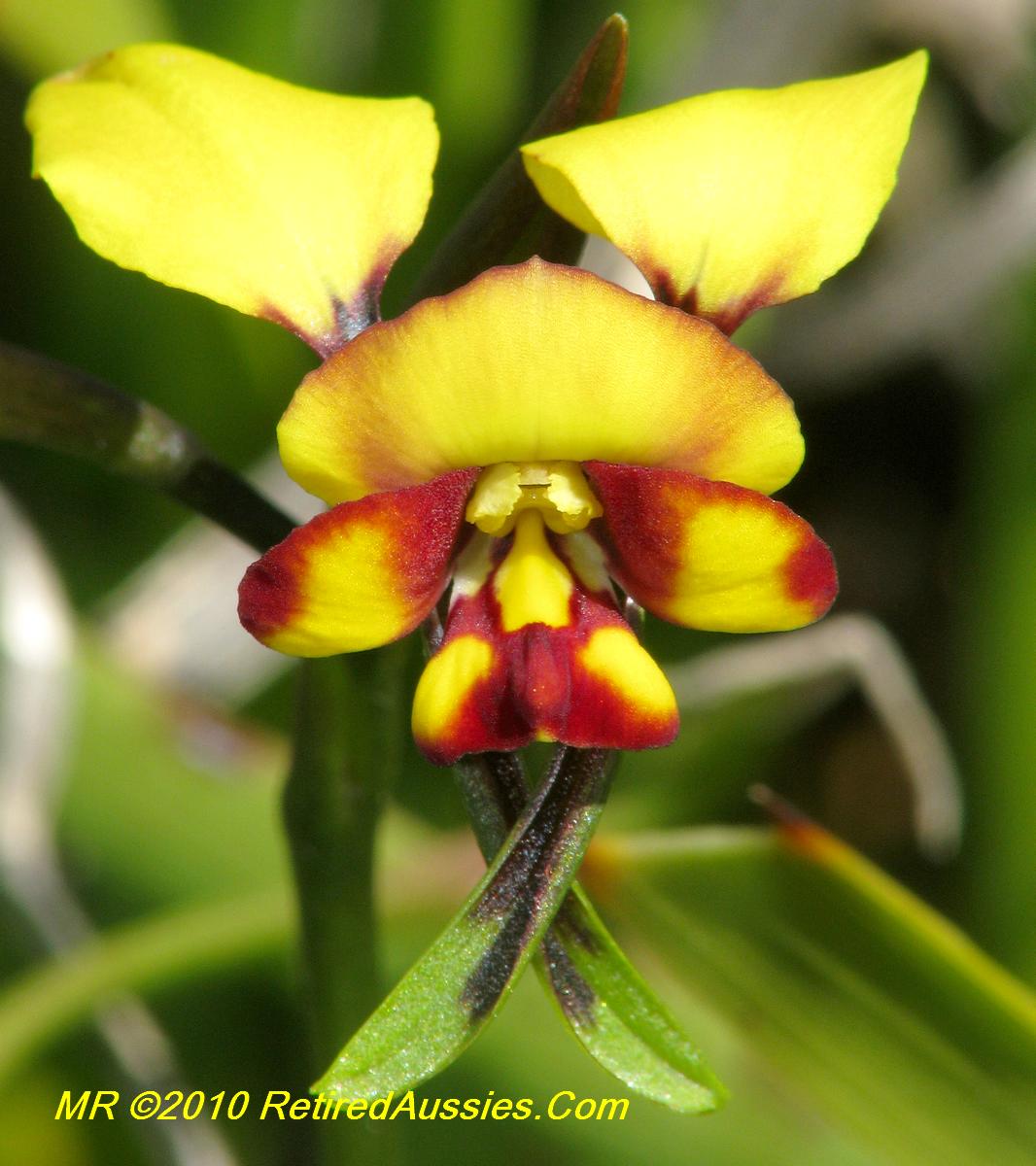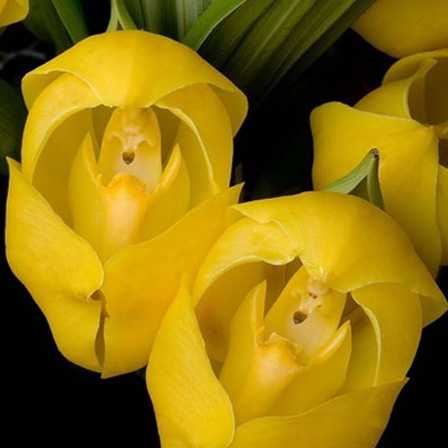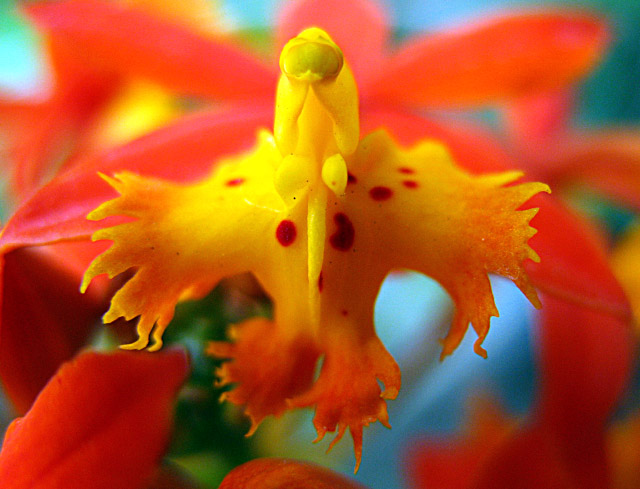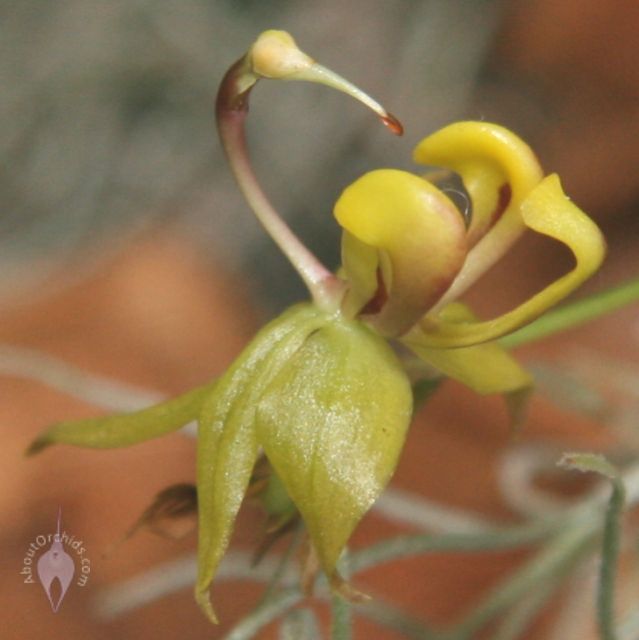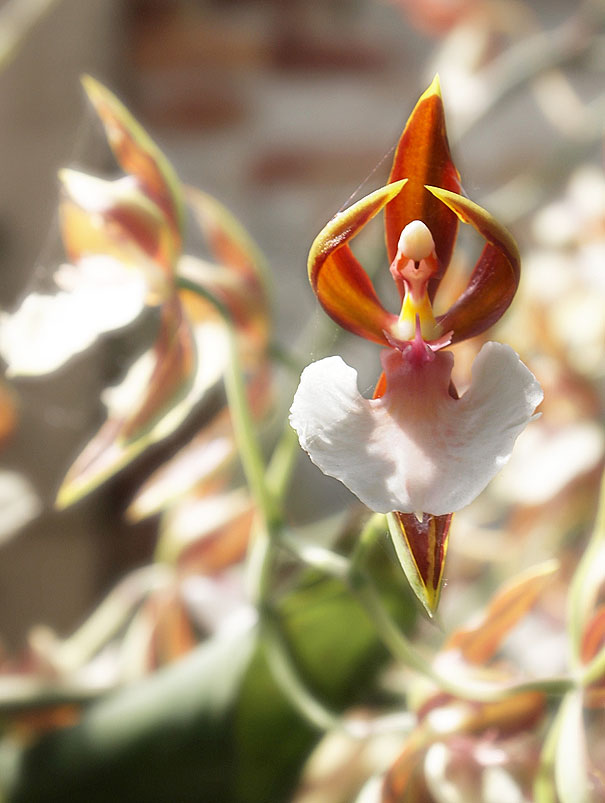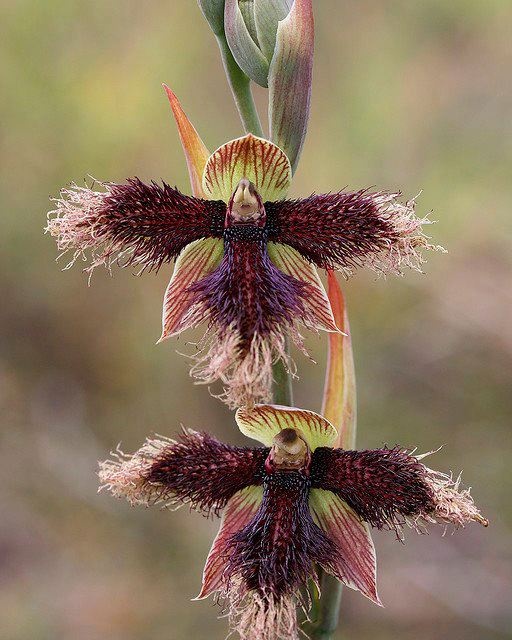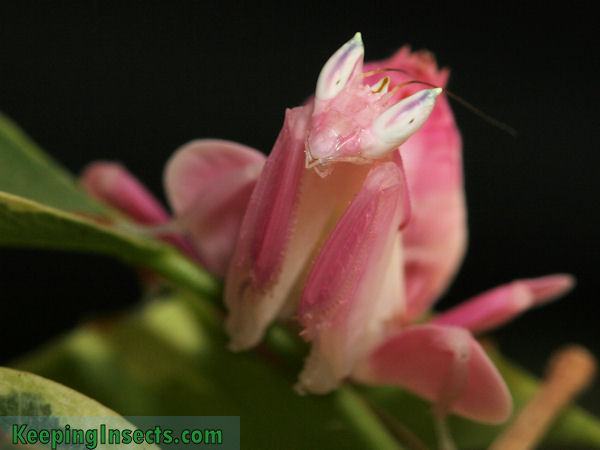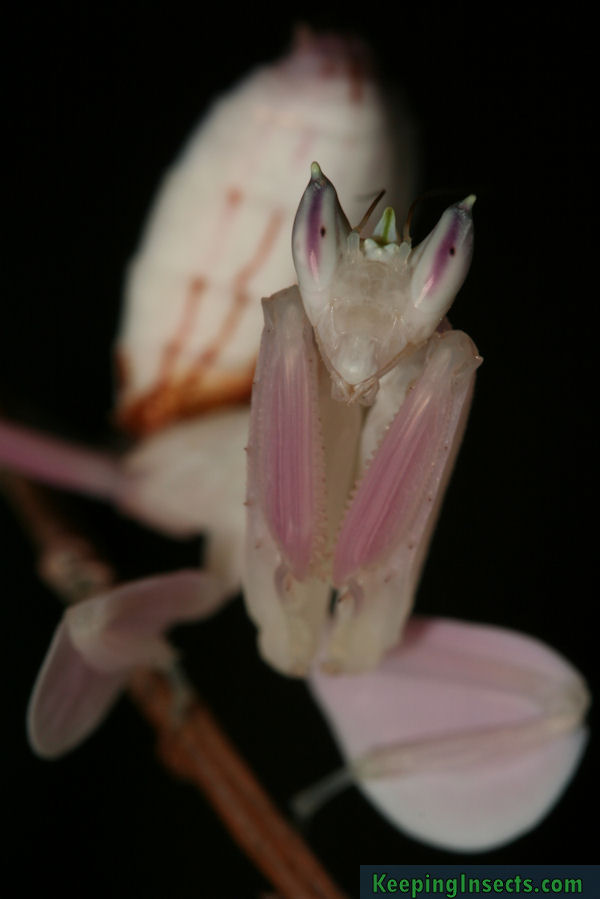#1 The Flying Duck Orchid
Caleana major, or the Flying Duck Orchid, is a small orchid found in eastern and southern Australia. This terrestrial plant features a remarkable flower, resembling a duck in flight. The flower is an attractant to insects, such as male sawflies which pollinate the flower in a process known as pseudocopulation. In 1986 this orchid was featured on an Australian postage stamp. Occurring from Queensland to South Australia, to even Tasmania, this plant is found in eucalyptus woodland in coastal or swampy shrubland and heathland. Mostly near the coast, but occasionally at higher altitudes. Because of the small size, it is a difficult plant to notice in the wild. Caleana major has been difficult to maintain in cultivation. Plants flower for one or sometimes two years but progressively weaken until they die.
#2 The Lion Orchid
Phalaenopsis (1825), known as the Moth Orchid, abbreviated Phal in the horticultural trade, is an orchid genus of approximately 60 species and forms. Phalaenopsis is one of the most popular orchids in the trade, through the development of many artificial hybrids. It is native to southern China, the Indian Subcontinent, Southeast Asia (Thailand, Philippines, Malaysia, Indonesia, etc.), New Guinea, the Bismark Archipelago, and Queensland. This particular type of phalaenopsis looks like a lion's face.
#3 Birds Head Orchid
Bird's Head Orchid, or pink moth orchid, is another variation of Phalaenopsis like the lion head orchid. It is also sometimes said to resemble a moth in flight, hence the name moth head orchid, or phalaenopsis.
#4 Monkey Face Orchid
Dracula simia, called also monkey orchid or the monkey-like Dracula, is an epiphytic orchid originally described in the genus Masdevallia, but later moved to the genus Dracula. The arrangement of column, petals and lip strongly resembles a monkey's face. The plant blooms at any season with several flowers on the inflorescence that open successively. Flowers are fragrant with the scent of a ripe orange.
#5 White Egret Orchid
Pecteilis radiata (syn. Habenaria radiata) is a species of orchid found in China, Japan, Korea and Russia. It is commonly known as the White Egret Flower, Fringed Orchid or Sagiso. It should not be confused with the white fringed orchid Platanthera praeclara, which is a North American species. The Sagiso is the official flower of Setagaya ward, Tokyo.
#6 Dove Orchid
Peristeria is a genus of plants belonging to the family Orchidaceae commonly called Dove Orchid or Holy Ghost Orchid. In line with the common name, the genus' name is from the Greek word peristerion meaning "from dove". According to the Royal Horticultural Society, Per is the official orchid abbreviation for this genus. In nature, it is found across much of South America as well as in Panama, Costa Rica and Trinidad.
Peristeria elata is the national flower of Panama and is extremely over-collected in its native habitat. This over collection has led to its status as a species threatened with extinction delineated in Appendix I of CITES. In its native habitat, Peristeria can usually be found growing near the edge of hardwood forests. In the fall, after the trees in the hardwood forest lose their leaves, the plants are exposed to full sun throughout the cool, dry winter. Species in this genus are either epiphytic or terrestrial in growth habit.
#7 Bee Orchid
Ophrys apifera, also known in Europe as the bee orchid, is a perennial herbaceous plant belonging to the family Orchidaceae. The name "Ophrys" derives from the Greek word ophrys, meaning "eyebrow", while the Latin specific epithet apifera means "bee-bearing" and refers to the bee-shaped lip of the orchid. Ophrys apifera is the only species of the genus Ophrys which preferentially practices self-pollination.
The flowers are almost exclusively self-pollinating in the northern ranges of the plant's distribution, but pollination by the solitary bee Eucera occurs in the Mediterranean area. In this case the plant attracts these insects by producing a scent that mimics the scent of the female bee. In addition, the lip acts as a decoy as the male bee confuses it with a female. Pollen transfer occurs during the ensuing pseudo-copulation.
The flowers emit allomones that attract the bee species Tetralonia cressa and Eucera pulveraceae. Eucera longicornis males have been observed attempting to copulate with the flowers. It is believed that male bees would preferentially select orchids with the most bee-like lips and attempt to mate with them, transferring pollen in the process.
#8 The Fly Orchid
| photo source link |
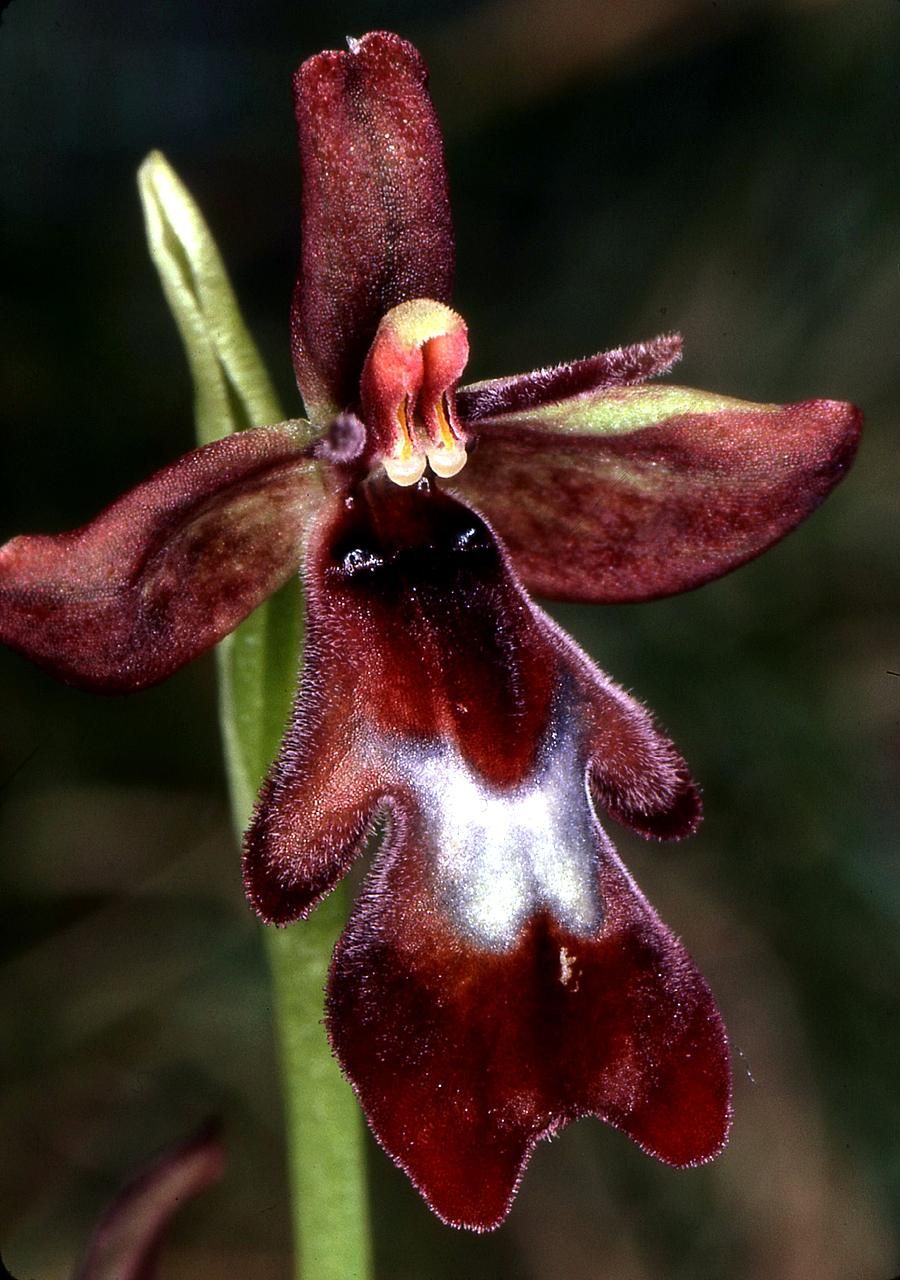 |
#9 The Nanny Goat Orchid
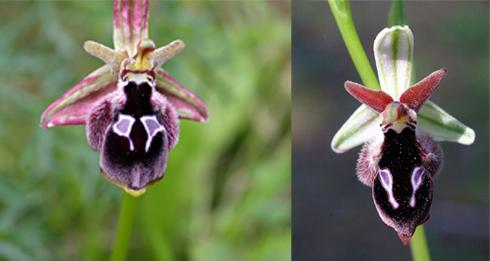 |
 |
 |
Diuris is a genus of herbaceous plant belonging to the orchid family (Orchidaceae), with more than fifty described species. The genus is being revised, with many newly described species. The scientific name is derived from the Greek words dis (double) and oura (tail), referring to the two lateral drooping sepals, giving a tailed appearance. The common name Donkey Orchid is logically derived from the appearance of the two lateral petals, protruding from the top of the flower like the two ears of a donkey. These features give Diuris its easily recognizable appearance.
Diuris consists of perennial species native to open habitats in Australia and Tasmania, with plus one species endemic to Timor. Many species are common in Australia. They grow in large clusters, due to the vegetative growth of their tubers. The genus is one of the best known of Australian terrestrial orchids with the purple Diuris (D. punctata) being always popular when exhibited.
#10 The Donkey Orchid
Also of Dirius, like the goat orchid.
#11 The Green Squid Orchid
Prosthechea cochleata, formerly known as Encyclia cochleata, Anacheilium cochleatum, and Epidendrum cochleatum and commonly referred to as the Cockleshell Orchid or Clamshell Orchid, is an epiphytic, sympodial New World orchid native to Central America, the West Indies, Colombia, Venezuela, and southern Florida.
Prosthechea cochleata var. triandra is an endangered variety that has three anthers and is autogamous, allowing its existence in Florida where no appropriate pollinators appear to be present. Prosthechea cochleata is the national flower of Belize, where it is known as the Black Orchid.
#12 Tulip Orchid
Anguloa, commonly known as tulip orchids, is a small orchid genus closely related to Lycaste. Its abbreviation in horticulture is Ang. This genus was described by José Antonio Pavón and Hipólito Ruiz López in 1798. They named it in honor of Francisco de Angulo, a contemporary Peruvian who collected orchids as a hobby and by this way had become quite knowledgeable about these plants, assisting the botanists in their work.
This genus is found on the forest floor at high elevations from Venezuela, Colombia, Ecuador, Bolivia and Peru
#13 Cabbage Patch Baby Orchid
The Anguloa uniflora orchid is the type species of its genus. They look like swaddled babies or cabbage patch kids to some.
#14 Naked Man Orchid
Orchis italica, commonly known as the naked man orchid or the Italian orchid, is a species of orchid native to the Mediterranean. They are widely popular for their petals looking like naked men. It prefers partial shade and low nutrient soil and flowers in April. O. italica grows up to 50 centimetres (20 in) in height, with bright pink, densely clustered flowers. They are found commonly and widespread in the Mediterranean in large clusters.
#15 Tiger Orchid (leopard orchid)
Another example of Phalaenopsis.
#16 Flying Bat Orchid
The Fringed Catasetum (Catasetum fimbriatum) is a species of orchid found in Bolivia.
#17 Angel Orchid
 |
Habenaria, commonly called bog orchids, are a far ranging genus of orchid. There are approximately 800-1000 species of Habenaria, native to every continent except Antarctica, in both tropical and temperate zones.
#18 Heart-Shaped Slipper Orchid
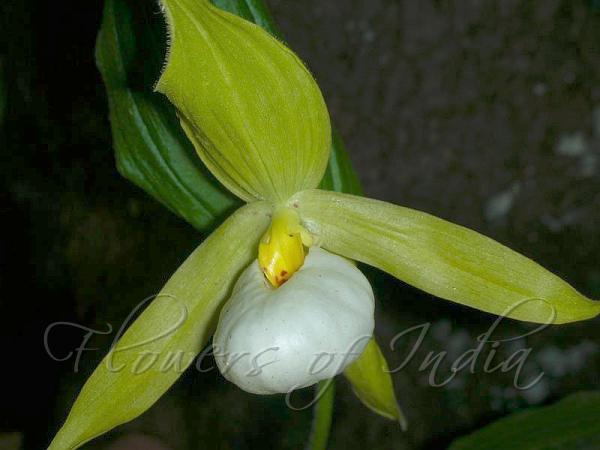 |
Heart-shaped Slipper Orchid is a terrestrial orchid of open woods and slopes. Found from Nepal, Bhutan, Northern Pakistan and tibet at elevations of 2100-4000 m in shady wet forests or open glades or under shrubs. It is 22-60 cm tall, with pale yellow sepal and petals with large cream/white pouch. It has a stem with 2 to 5, elliptic, well spaced leaves and blooms on a 1 or rarely 2 flowered inflorescence occuring in the summer. It is one of the threatened species in India.
#19 Spider Orchid
 |
The genus Caladenia, commonly known as the spider orchid, belongs to the subfamily Orchidoideae of the orchid family (Orchidaceae). The abbreviation Calda. is often used in trade journals to indicate the genus.
The subtribe Caladeniinae is considered polyphyletic, due to the alliance of Lyperanthus with the genera of Drakaeinae and Thelymitrinae.
#20 More Bird Orchids
Orchid Mantis
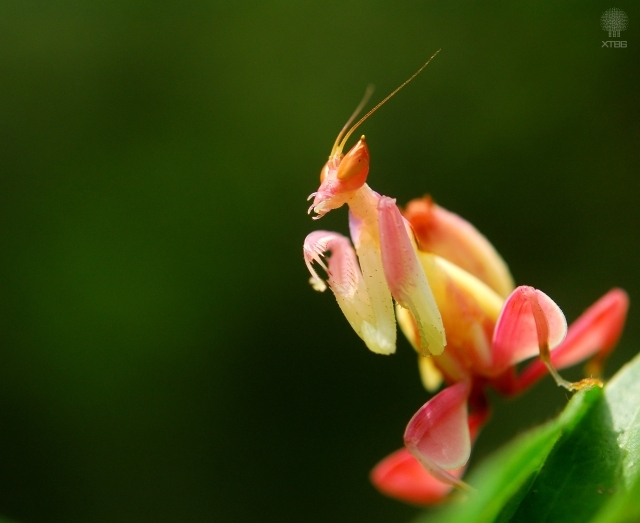 |
Hymenopus coronatus, also called H. bicornis, is a mantis from the rain forests of southeast Asia. It is known by various common names including walking flower mantis and (pink) orchid mantis. It is one of several species known as flower mantises from their resemblance and behavior to orchids.
Skull Orchids (snap-dragon seedpods)
Skull orchids are actually the seedpods of the common garden plant the snap-dragon.
20-orchids-that-look-like-something-else, beautiful orchids, orchid-mimicry, orchids, orchids-look-like, orchids-that-look-like-animals, orchid mantis, bird orchid, spider orchid, mimicry, heart shaped slipper orchid, angel orchid, fringed catasetum, tiger orchid, naked man orchid, anguloa uniflora, baby orchid, tulip orchid, squid orchid, donkey orchid, nanny goat orchid, gorgeous photos, gift ideas, great gift ideas, what to share on face book, fly orchid, bee orchid, dove orchid, white egret orchid, monkey face orchid, birds head orchid, lion orchid, flying duck orchids, best orchids, most beautiful orchids20-orchids-that-look-like-something-else, beautiful orchids, orchid-mimicry, orchids, orchids-look-like, orchids-that-look-like-animals, orchid mantis, bird orchid, spider orchid, mimicry, heart shaped slipper orchid, angel orchid, fringed catasetum, tiger orchid, naked man orchid, anguloa uniflora, baby orchid, tulip orchid, squid orchid, donkey orchid, nanny goat orchid, gorgeous photos, gift ideas, great gift ideas, what to share on face book, fly orchid, bee orchid, dove orchid, white egret orchid, monkey face orchid, birds head orchid, lion orchid, flying duck orchids, best orchids, most beautiful orchids20-orchids-that-look-like-something-else, beautiful orchids, orchid-mimicry, orchids, orchids-look-like, orchids-that-look-like-animals, orchid mantis, bird orchid, spider orchid, mimicry, heart shaped slipper orchid, angel orchid, fringed catasetum, tiger orchid, naked man orchid, anguloa uniflora, baby orchid, tulip orchid, squid orchid, donkey orchid, nanny goat orchid, gorgeous photos, gift ideas, great gift ideas, what to share on face book, fly orchid, bee orchid, dove orchid, white egret orchid, monkey face orchid, birds head orchid, lion orchid, flying duck orchids, best orchids, most beautiful orchids












